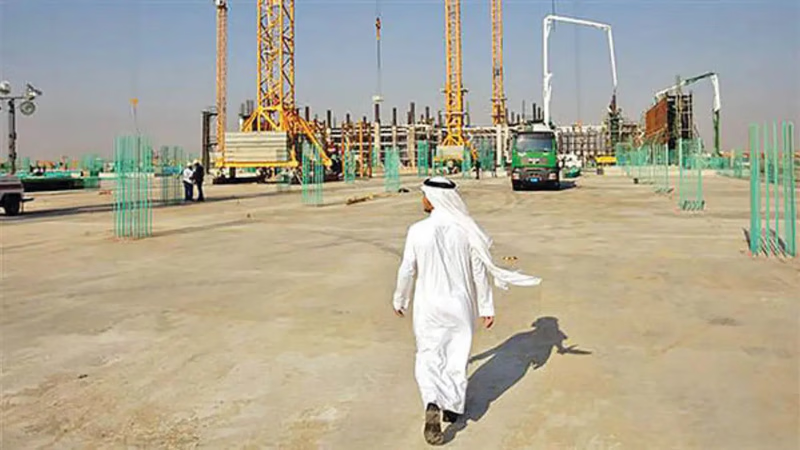
Kuwait"s trade landscape: key commodities and export insights. "
In addition to the above products, various other goods are exported to Kuwait. Although the list of goods to be exported to Kuwait may change each year, many of the products exported are often the same each year. The second Gulf War and the occupation of Kuwait in 1990 dealt a fatal blow to Kuwait's economy, squandering more than $ 100 billion in foreign reserves and investments. The total damage to Kuwait as a result of its occupation by Iraq is estimated at more than $ 109.44 billion. The structure of Kuwait's economy did not change after the Persian Gulf War. The country's GDP increased after 1993 after a decline due to the occupation.
Kuwait is a small but restricted economy that is heavily dependent on crude oil exports. The sale of crude oil accounts for 90% of GDP and 75% of the government budget. The global oil crisis of late 1998 and early 1999 reduced the country's budget from $ 5.5 billion to $ 3 billion, creating widespread problems for Kuwait's economy. Of course, much of Kuwait's economic woes over the past 10 years are due to the devastating effects of Iraq's 1990 invasion of the country's oil facilities. Funding for the reconstruction of cities and economic units on the one hand, and the cost of sending US troops to defend Kuwait against Iraq's ambitious threats, has prompted the Kuwaiti government to attract foreign investment in recent years.
Examining it will help Iranian businessmen and traders to better analyze and study trade with this country. According to statistics, the most important goods exported by Iran to Kuwait in 2018 are as follows:
- Mineral products: gypsum, lime, cement, sulfur, salt, and stone
- Iron and steel
- Sheep and other live animals
- Oilseeds
- Food products such as flour, cereals, dairy products
- Types of vegetables and agricultural products
- Fish and other marine fish
- Fruits and citrus fruits, watermelon
- Works of art and culture
- Building materials
Kuwait has a good per capita income due to its small population and relatively high GDP. The average per capita income of the Kuwaiti people, which was about $ 12,500 in 1999, rose to about $ 14,000 in 2000. Few people live below the poverty line in this country and most of the families have a relatively prosperous life. The tendency for luxuries and rituals, which is a subculture in Kuwaiti families, stems from this relative social well-being. The economic inflation rate in Kuwait is estimated at less than 2%, which is a reasonable rate (it was about 8.7% in 1997). Kuwait has a workforce of one million, most of whom are immigrants from neighboring countries. Fifty percent of Kuwait's workforce is employed in government and social services, 40 percent in services, and 10 percent in industry and agriculture.
Kuwait is a good buyer of food, building materials, vegetables, and clothing from neighboring countries. The official currency of Kuwait is the dinar, which is divided into one thousand scales. Each US dollar is currently equal to 0.28073 Kuwaiti dinars (December 18, 2011) Kuwait is one of the 20 most expensive cities in the world in terms of the high cost of living.
After 1991, Kuwait's former economic problems were linked to the devastating consequences of the second Gulf War, and there was an urgent need to change the country's economic structure. The Kuwaiti government enlisted the advice of the World Bank and the International Monetary Fund to follow this path and solve its fundamental economic problems. In 1993, expert delegations from the two organizations visited Kuwait and recommended the implementation of an economic reform program, the main focus of which is:
- Privatization
- Elimination of subsidies and free services, increase of taxes
Kuwait has invested directly and indirectly in European, American, and Asian countries. The largest of these investments are in seven industrialized countries. Kuwait's trade balance in 1997 and 1998 was $ 7.1 billion and $ 641 million, respectively. Also, the current account balance of this country in the above years reached 7.9 billion and 2.9 billion dollars, respectively. Crude oil, petrochemicals, food products, construction metals, and salt are the main industrial and mineral products of Kuwait.
Kuwait also can generate 27 billion kilowatt-hours of electricity, all of which are supplied by thermal power plants and consumed by domestic units. Kuwait has little agriculture and its fishing activities are limited to fishing and shrimp. The United States, Japan, South Korea, India, Singapore, the United Kingdom, Germany, and Italy are Kuwait's largest trading partners. The Emirate of Kuwait with an area of 17.818 square kilometers and a population of about two million people is located in the north of the Arabian Peninsula and northwest of the Persian Gulf between 8 and 30 degrees latitude 46 and 48 degrees east longitude and from north to Iraq, from south to Saudi Arabia is bounded on the east by the Persian Gulf.
Kuwait is flat and desert land with a sandy surface and no natural features such as mountains and rivers. Since political, economic, social, etc. activities revolve around the city (Kuwait), in terms of area and population, the concept of city-state can be applied to Kuwait. The country has several islands on the shores of the Persian Gulf, the most important and largest of which are: Bobian, Filke, Varya, Meskan, Awah, Umm al-Niml, Qarawara, Umm al-Muradam, and Kabar. Due to its geographical location, Kuwait has always been an important center for shipping and maritime activities.
-

Kuwait"s trade landscape is heavily dominated by petroleum exports, which account for approximately 92% of its total exports. The primary markets for these oil exports are Asian countries, notably China and India. In addition to oil, Kuwait also exports chemicals, fertilizers, and plastics. The country benefits from its membership in the Gulf Cooperation Council (GCC), which fosters economic integration and trade cooperation among member states. Kuwait has established free trade zones, such as the Shuwaikh Free Trade Zone, to attract foreign investment and streamline customs processes. Despite a strong export economy, Kuwait relies on imports for many goods, including machinery, food products, and medical equipment. Major import partners include the United States, China, Germany, and India. Recent data indicates a notable increase in Iranian goods exported to Kuwait in 2018, highlighting shifts in trade dynamics within the region. Overall, while oil remains the cornerstone of Kuwait"s economy, the country is actively engaging in diversifying its trade relationships and enhancing its import capabilities.
-
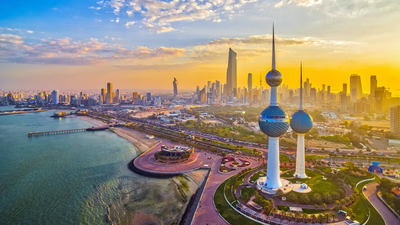
Kuwait, located in the northeastern Arabian Peninsula, is bordered by Iraq and Saudi Arabia. With a population of approximately 4. 3 million, it features a mix of Kuwaiti citizens and expatriates. The capital, Kuwait City, serves as the political and economic hub. While not a major tourist destination, Kuwait offers attractions like the Kuwait Towers and Grand Mosque. The country has a strong economic presence in the region due to its strategic location and access to international waters. It is known for its high-value currency, the Kuwaiti Dinar (KWD), and well-developed infrastructure including roads, airports, and seaports. Kuwait"s economy is heavily reliant on oil exports but is diversifying into finance, real estate, and trade sectors.
The cultural landscape is influenced by Islamic traditions and Arab customs, with a significant expatriate community contributing to its demographic diversity. Understanding Kuwait"s market dynamics can benefit businesses looking to engage in import-export activities.
-
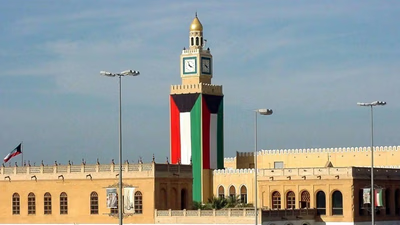
Kuwait"s economy is heavily influenced by Islam, which shapes its cultural and legal frameworks. The Kuwaiti Dinar (KWD) is the official currency, known for its high value linked to the oil sector. Approximately 70% of the population are Sunni Muslims, with a significant emphasis on charitable giving through zakat. The economy relies predominantly on oil exports, accounting for about 85% of government revenue. Despite this dependency, Kuwait is pursuing economic diversification to reduce reliance on oil and enhance sectors like finance and tourism. The country has implemented fiscal reforms in response to fluctuating oil prices, aiming to stabilize its economy. Agriculture plays a minimal role in GDP, making Kuwait a major food importer. The stability of Kuwait"s economy attracts global business actors, fostering a favorable environment for trade and investment.
Additionally, Islamic finance is prominent in Kuwait, offering Sharia-compliant financial products that align with religious principles. Religious tourism also contributes to the economy as visitors come to explore its historical Islamic sites.
-

Kuwait"s economy is heavily reliant on crude oil exports, which constitute 90% of its GDP and 75% of government revenue. The aftermath of the Gulf War in 1990 severely impacted its economic structure, leading to significant foreign investment efforts to revitalize the economy. Key exports to Kuwait include mineral products like gypsum and cement, iron and steel, live animals, food products, vegetables, fish, fruits, and building materials. The country has a relatively high per capita income due to its small population and substantial GDP. Despite economic challenges post-war, Kuwait has maintained a low inflation rate and a diverse import market for food and construction materials. The government has sought advice from international financial institutions to implement economic reforms focusing on privatization and tax increases. Kuwait"s strategic location enhances its role as a trade hub in the region, with major trading partners including the US, Japan, South Korea, and several European nations.
-
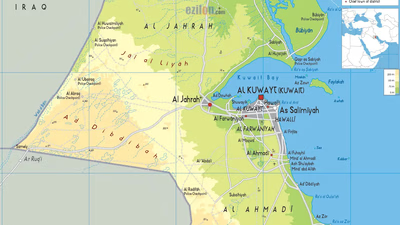
Kuwait"s ports play a crucial role in its trade landscape, with the Port of Shuwaikh being the largest and busiest, handling a variety of commercial cargo. The Port of Shuaiba follows as the second-largest, focusing on bulk cargo such as petroleum products and chemicals. Bubiyan Port, currently under development, aims to become a significant transshipment hub with advanced facilities. Al-Ahmadi Port is dedicated to oil exports, while other ports like Al-Zour and Doha serve specific functions in the oil and light goods sectors. The strategic location of these ports enhances Kuwait"s attractiveness for global traders. Import regulations require licenses from the Ministry of Commerce and Industry, ensuring that only registered importers can operate within the country. This regulatory framework supports a stable trade environment, fostering connections between local exporters and international markets.
-
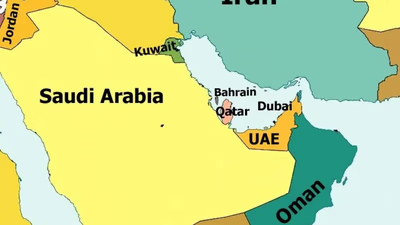
Kuwait, located in West Asia, shares borders with Saudi Arabia and Iraq, and has a coastline along the Persian Gulf. Despite its small geographical size of over 17,000 square kilometers, Kuwait has a rich history and complex identity. The country was founded by Sheikh Barak ibn Gharir al-Hamid in the early 18th century and has evolved into a significant player in regional trade. Approximately 60% of its population are Arabs, with a notable Asian demographic as well. The official language is Arabic, while English is widely spoken due to historical influences. Kuwait"s climate is predominantly hot and dry, necessitating substantial imports of food and water. The nation has made strides in improving its agricultural practices through greenhouses and other innovations. Politically, Kuwait operates as a sheikhdom with a parliamentary system that allows for greater openness compared to some neighboring countries.
Since gaining independence in 1961, it has maintained stability and fostered international relations despite historical territorial disputes with Iraq. Today, Kuwait stands as one of the safest countries in the region, making it an attractive hub for trade and business networking. "






